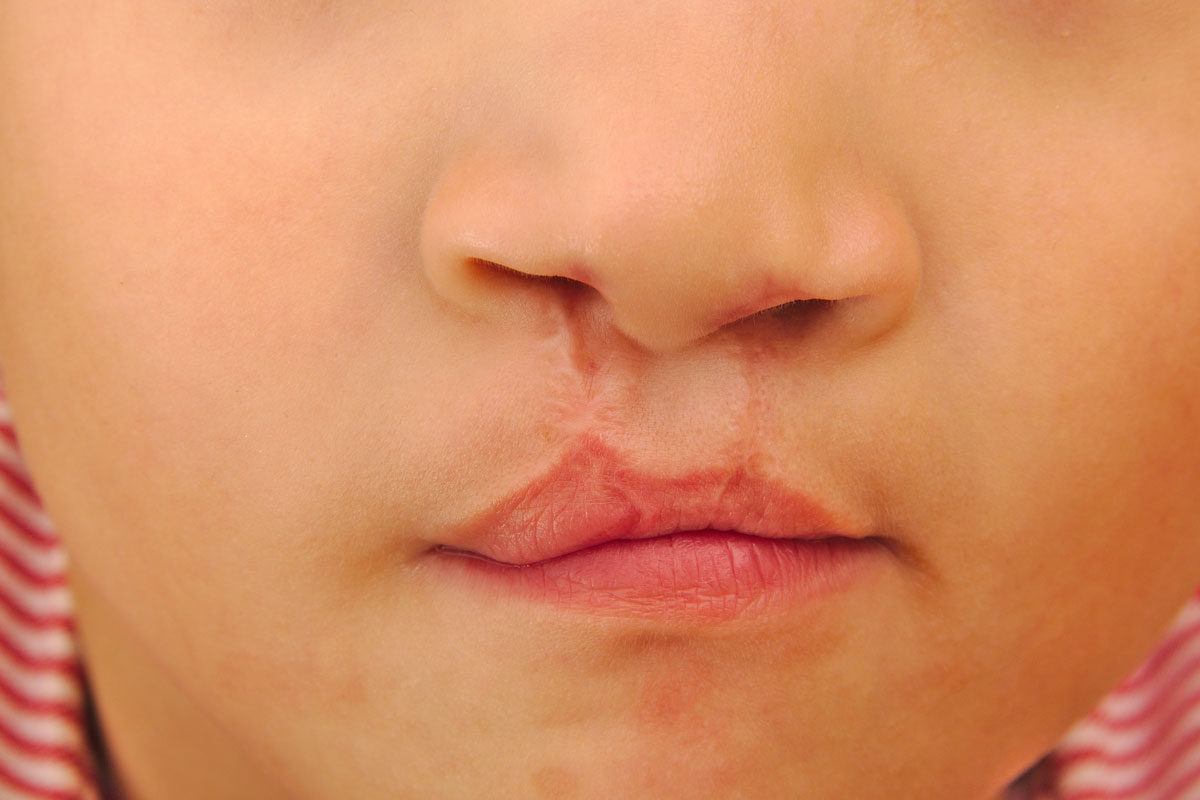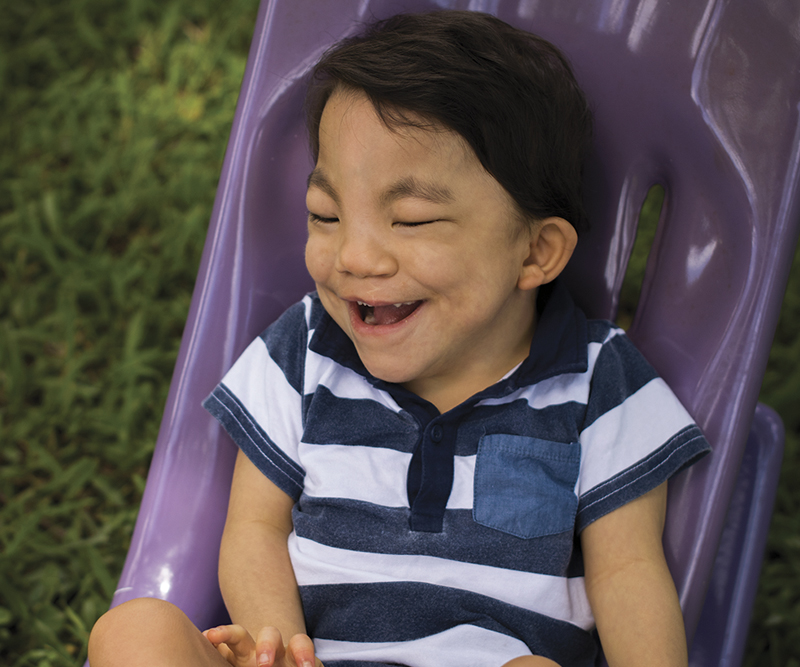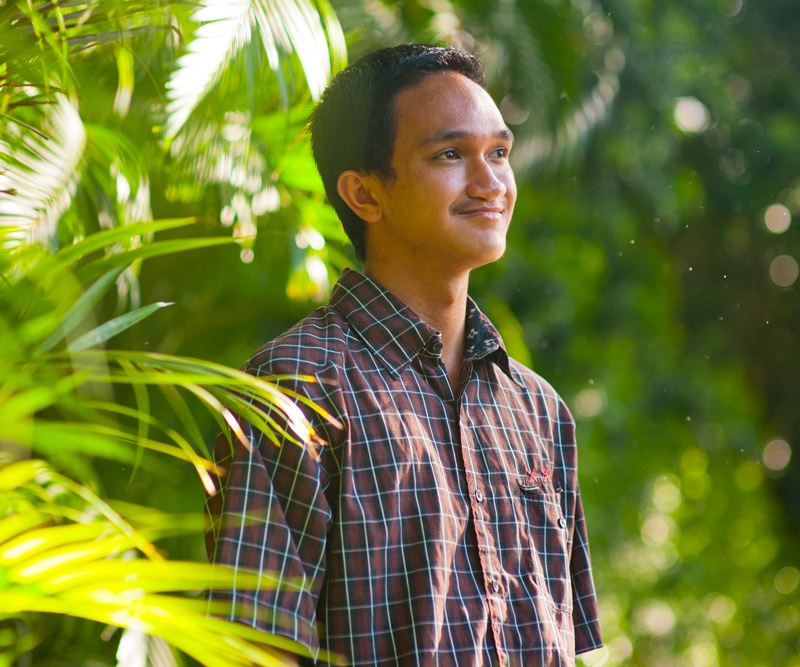
Creating a Lifetime of Smiles for Children with Cleft & Craniofacial Conditions
Cleft lip and cleft palate, or orofacial clefts, are among the most common problems found in newborn babies.
“Isolated orofacial clefts are one of the most common birth defects in the United States,” says Christine Johnston, a pediatric nurse practitioner at the Kapiolani Cleft and Craniofacial Clinic (KCCC).
Orofacial cleft is a condition in which tissue in the baby’s upper lip or the roof of the mouth does not join together completely in utero, leaving facial developmental issues that can impact a child’s hearing, vision, ability to eat and even the child’s ability to smile.
National statistics show that:
- One in every 1,600 babies will be born with a cleft lip and cleft palate.
- One in every 2,800 babies will be born with a cleft lip.
- One in every 1,700 babies will be born with a cleft palate.
"Cleft lip and cleft palate are some of the most common birth defects. Most often, they occur as isolated birth defect, meaning there is no known genetic or environmental cause,” Johnston says. "However, cleft lip and palate are also associated with many genetic conditions or syndromes."
The Centers for Disease Control and Prevention (CDC) recently found that women who smoke during pregnancy or who are diagnosed with diabetes before pregnancy have an increased risk of having a child with a cleft. The CDC also found that women who use certain medicines to treat epilepsy, such as topiramate or valproic acid, during the first trimester (the first three months) of pregnancy have an increased risk.
While clefts are the most common type of craniofacial condition, various other birth defects can occur, such as:
- Pierre Robin Sequence – Patients have a smaller-than-normal lower jaw, a tongue that falls back in the throat, and difficulty breathing.
- 22q11.2 Deletion Syndrome – Linked with more than 180 different health issues, most often cleft palate, heart defects, facial differences, learning problems, and speech and feeding problems.
- Craniosynostosis – A birth defect in which one or more of the joints between the bones of the skull close before the brain is fully formed, inhibiting natural brain growth and causing a misshapen head. Can include:
- Crouzon Syndrome – Includes abnormal development of the eye sockets and the mid-face.
- Apert Syndrome – Involves distortions of the head and face, and webbing of the hands and feet.
- Hemifacial Microsomia/Goldenhar – The lower half of one side of the face does not grow normally, most often will involve a partially formed ear or total absence of an ear.
- Microtia – The external ear is underdeveloped or absent.
- Treacher Collins – A rare condition that affects the development of bones, skin and muscles of the face.
Established in 2007 by two neonatologists, KCCC employs a multidisciplinary approach with a dedicated team of specialists who work to provide comprehensive care to patients and their families. This care often starts before the baby is born with a prenatal consult and continues until adulthood.
“Having a child with cleft lip or palate requires treatment and evaluation by multiple subspecialists, and being treated by a cleft and craniofacial team allows for coordinated services across many subspecialties,” Johnston says.
The KCCC team is composed of specialists from various disciplines, including pediatricians, speech and feeding therapists, nutritionists, audiologist, plastic surgeons, social workers, behavioral health specialists, genetic counselors, orthodontics, dentists and oral surgeons.
“A team-based, multidisciplinary approach is the best way to recognize and treat the full spectrum of challenges associated with cleft and craniofacial conditions, including dental issues and those related to speech and language skills,” Johnston explains.
Since its creation, KCCC has treated more than 1,950 patients, with more than 850 current patients at different stages of treatment.
“KCCC is an American Cleft Palate and Craniofacial Association (ACPA)-approved team with 16 specialties involved in multidisciplinary care,” Johnston says. “We see patients from outer islands, American Samoa, Guam and Micronesia. We also see patients for prenatal consults if the baby carries a diagnosis identified on ultrasound.”
One such family to receive assistance from KCCC is the Maga ohana, who sought professional medical guidance and genetic counseling from the clinic upon learning at a 20-week ultrasound appointment that daughter Anya had a slight chromosome disorder.
Read Anya’s full story to learn how the clinic helped create a lifetime of smiles for this little girl and her family.
Just as they did for Anya, the doctors and nurses at KCCC work together as a team for the best possible outcome for each child with orofacial clefts as they age and go through different stages of growth and development.
“Surgical repair can improve appearance, breathing, hearing, and speech and language development,” Johnston says.
Although cleft lip and cleft palate are usually repaired surgically in the first year of life, many children will require additional surgeries as they get older to correct breathing, eating and speech development. They also may require ongoing speech therapy and may need specialized orthodontics prior to additional surgeries.
Despite these unique health challenges, those born with cleft and craniofacial conditions can lead fulfilling, successful and accomplished lives.
Find out more about KCCC, its services and its team of cleft and craniofacial specialists.
Published on: July 13, 2023




